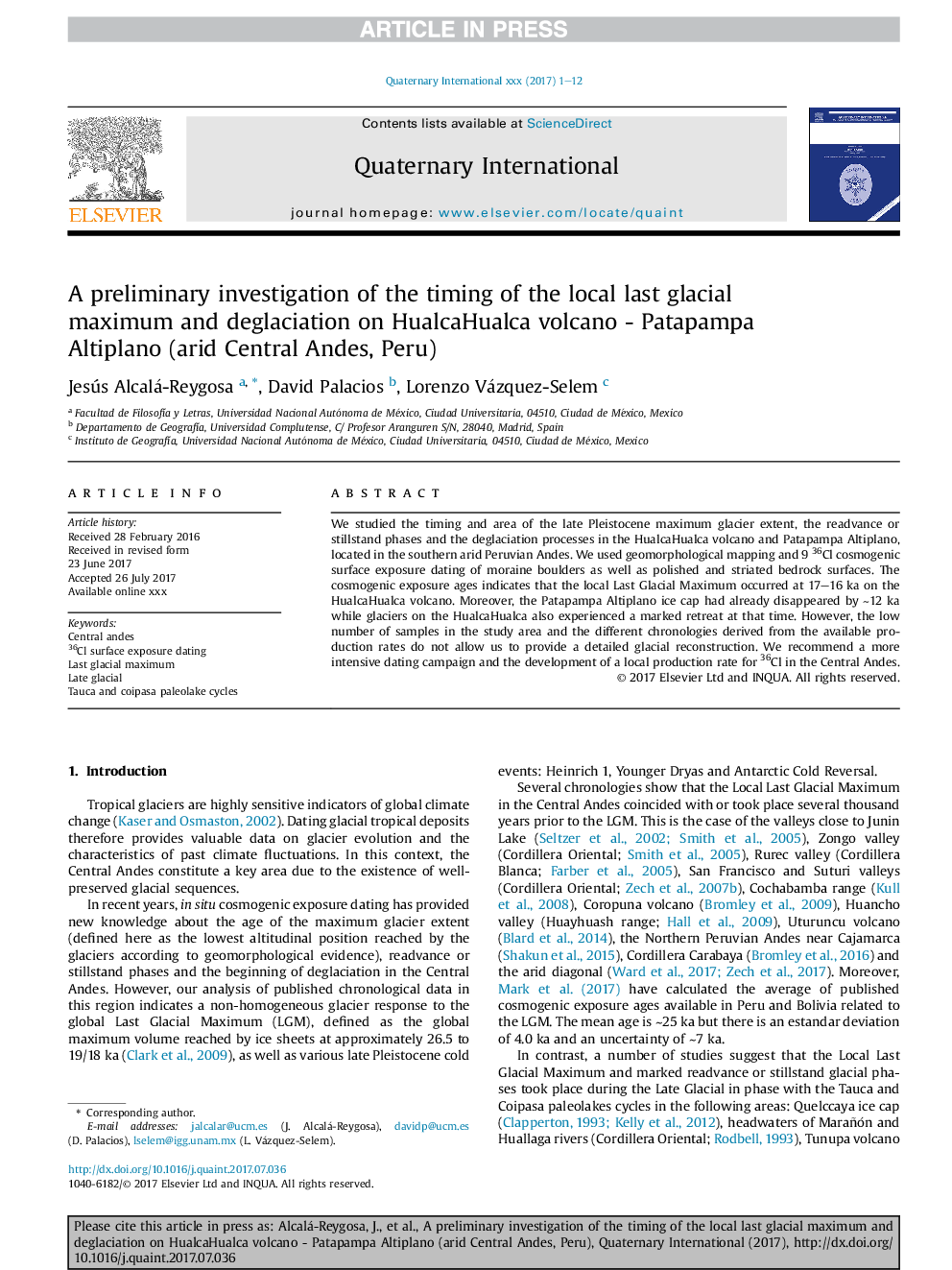| Article ID | Journal | Published Year | Pages | File Type |
|---|---|---|---|---|
| 5113057 | Quaternary International | 2017 | 12 Pages |
Abstract
We studied the timing and area of the late Pleistocene maximum glacier extent, the readvance or stillstand phases and the deglaciation processes in the HualcaHualca volcano and Patapampa Altiplano, located in the southern arid Peruvian Andes. We used geomorphological mapping and 9 36Cl cosmogenic surface exposure dating of moraine boulders as well as polished and striated bedrock surfaces. The cosmogenic exposure ages indicates that the local Last Glacial Maximum occurred at 17-16 ka on the HualcaHualca volcano. Moreover, the Patapampa Altiplano ice cap had already disappeared by â¼12 ka while glaciers on the HualcaHualca also experienced a marked retreat at that time. However, the low number of samples in the study area and the different chronologies derived from the available production rates do not allow us to provide a detailed glacial reconstruction. We recommend a more intensive dating campaign and the development of a local production rate for 36Cl in the Central Andes.
Related Topics
Physical Sciences and Engineering
Earth and Planetary Sciences
Geology
Authors
Jesús Alcalá-Reygosa, David Palacios, Lorenzo Vázquez-Selem,
